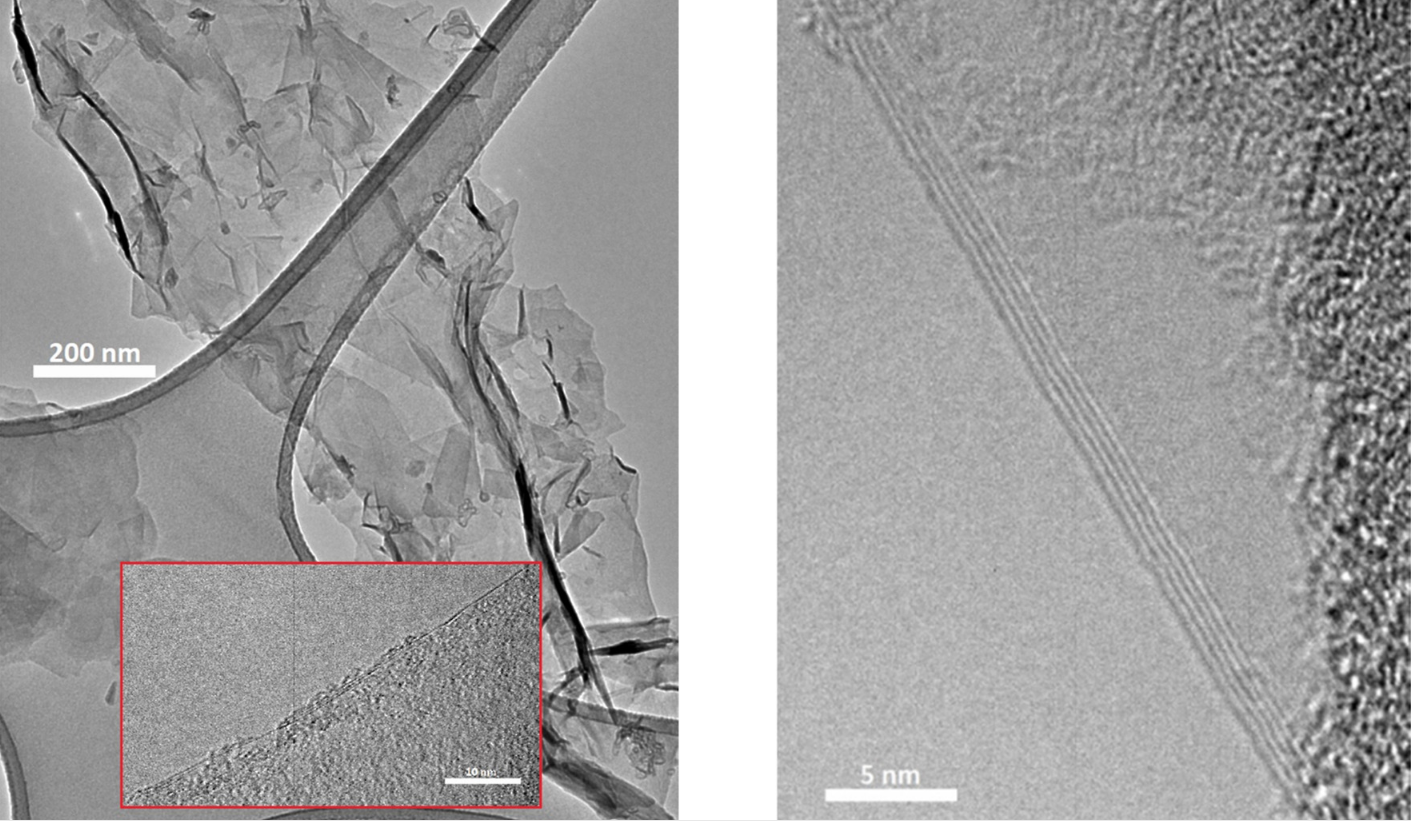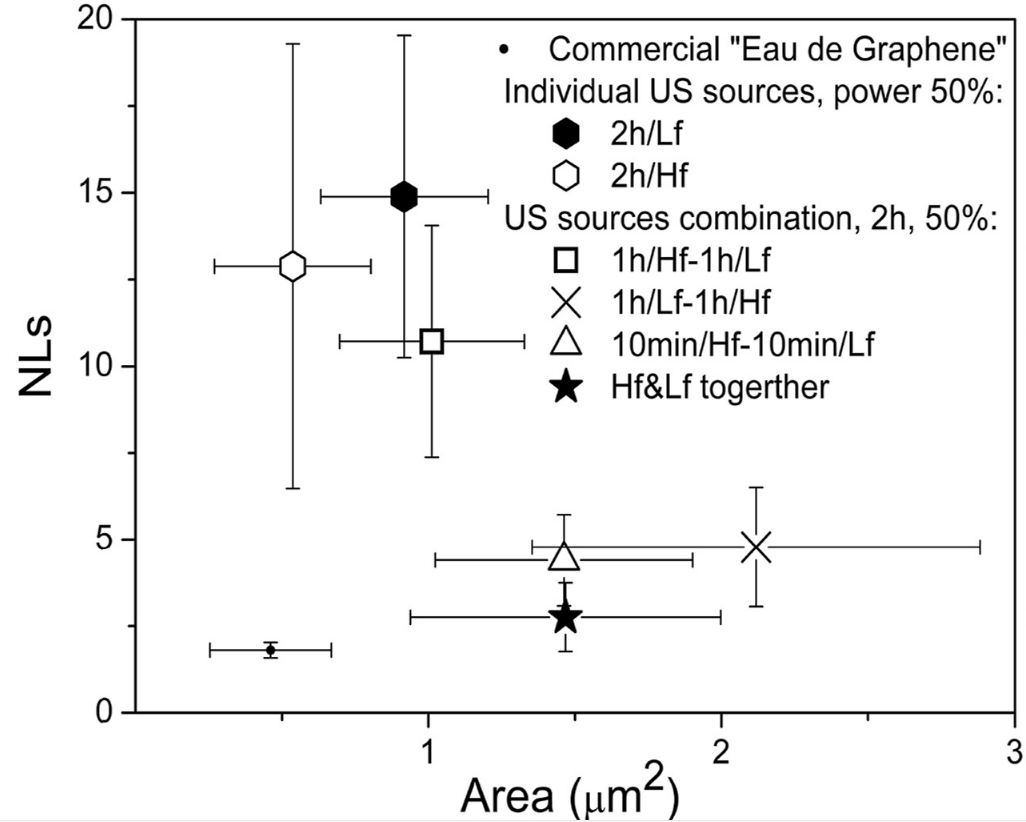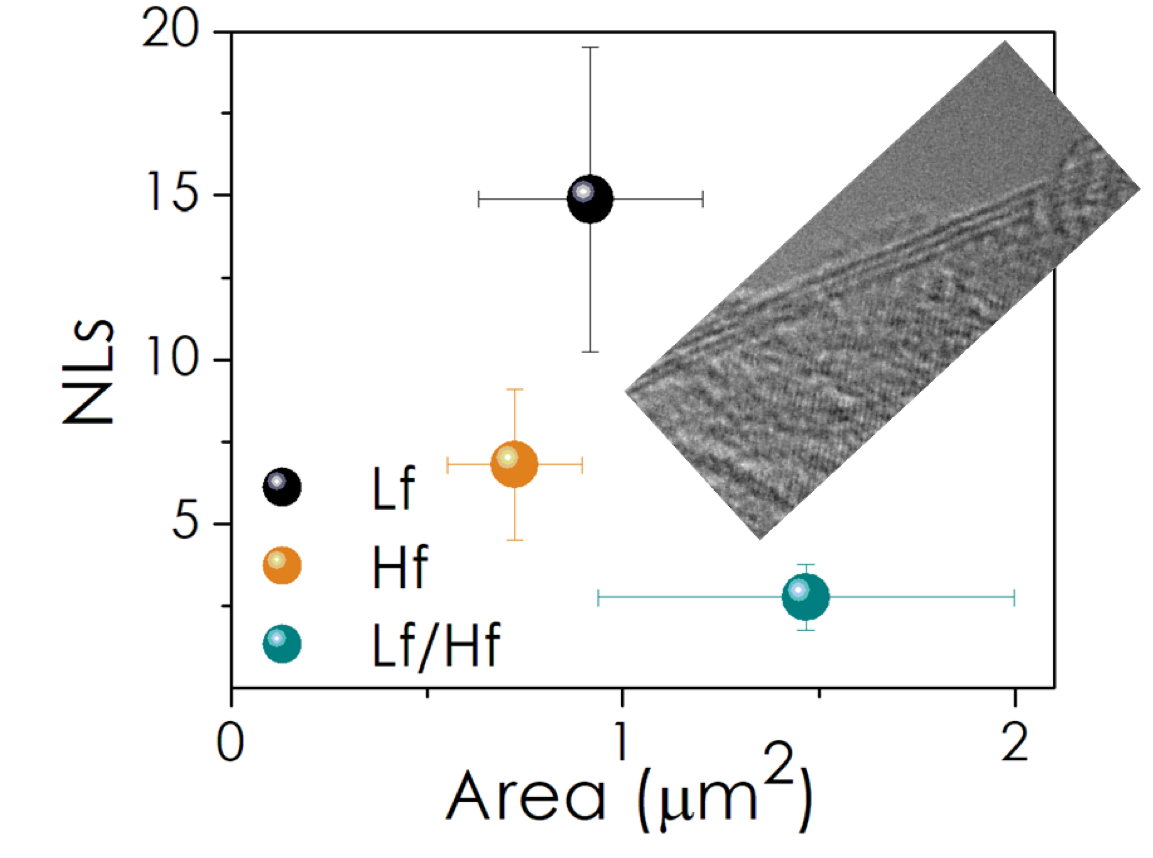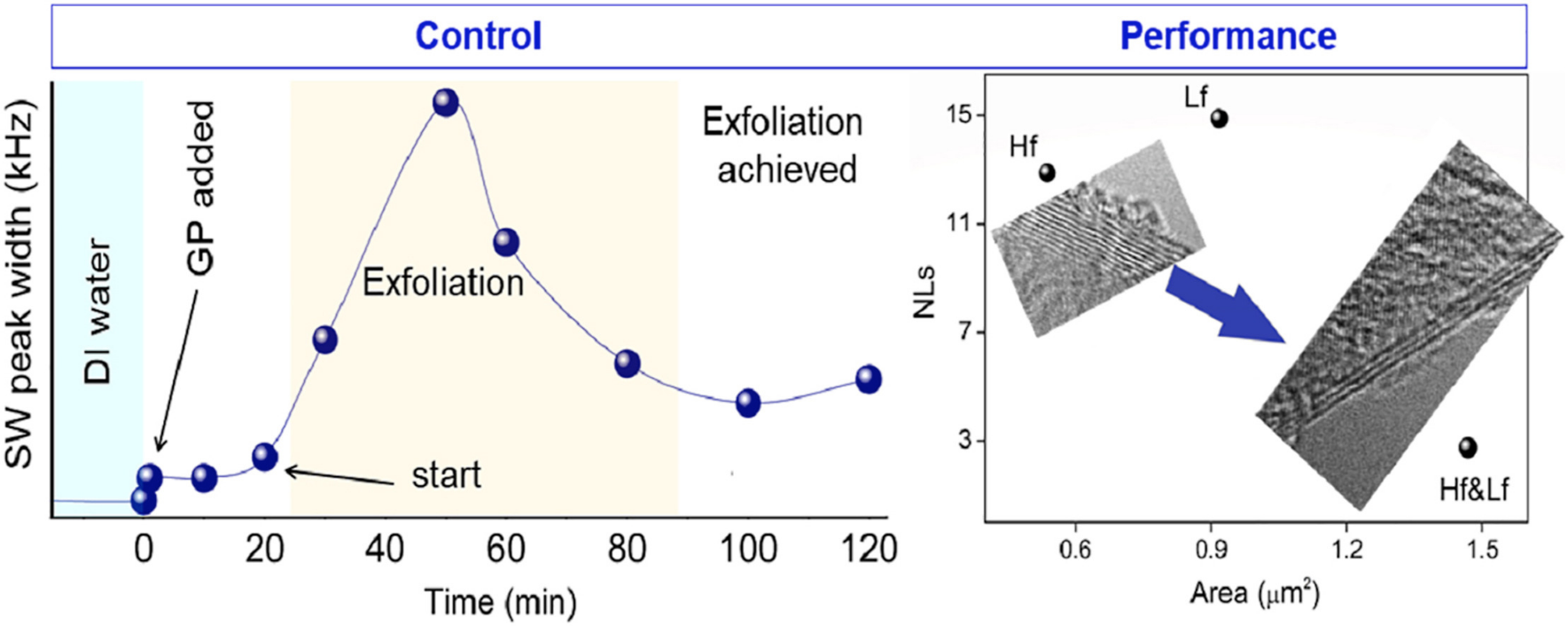Ultrasonic Exfoliation of Nanomaterials

Graphene, since its discovery in 2004, has emerged as one of the most promising 2D materials for nanotechnological applications. However, large scale graphene production is costly, inefficient and suffers from environmental problems due to the huge amount of waste generated during graphene manufacturing. Economic and environmental concerns became an obstacle for industries to benefit from graphene in full measure. It is expected that in the next few years the demand for graphene will increase to over 10 thousand tons per year, making the current total global capacity of manufacturers highly insufficient.
Our research in collaboration with Brunel (Prof. Eskin), Hull (Prof. Mi) and Oxford (Prof. Grobert) Universities demonstrated that an optimised ultrasonic cavitation regime based on generation of cavitation bubbles of different sizes, using low (20-kHz, generates large size bubbles) and high (1-MHz, generates small size bubbles) frequency sources at 40-50°C aids the production of high-quality (defect free) and large in size (1-2 µm2) graphene flakes with a controlled thickness of 3-5 layers and a 10% yield in less than 2-hours for volumes up to 0.5 l in pure water.
The ultimate goal of this research is to penetrate the emerging applications and markets where the niche (large production of high quality and controllable 2Ds) becomes necessity (integration in disruptive applications to improve life quality).



The acoustic spectra obtained in different frequency ranges suggested that shock wave emissions can be used for in-situ monitoring of ultrasonic liquid phase exfoliation process.
